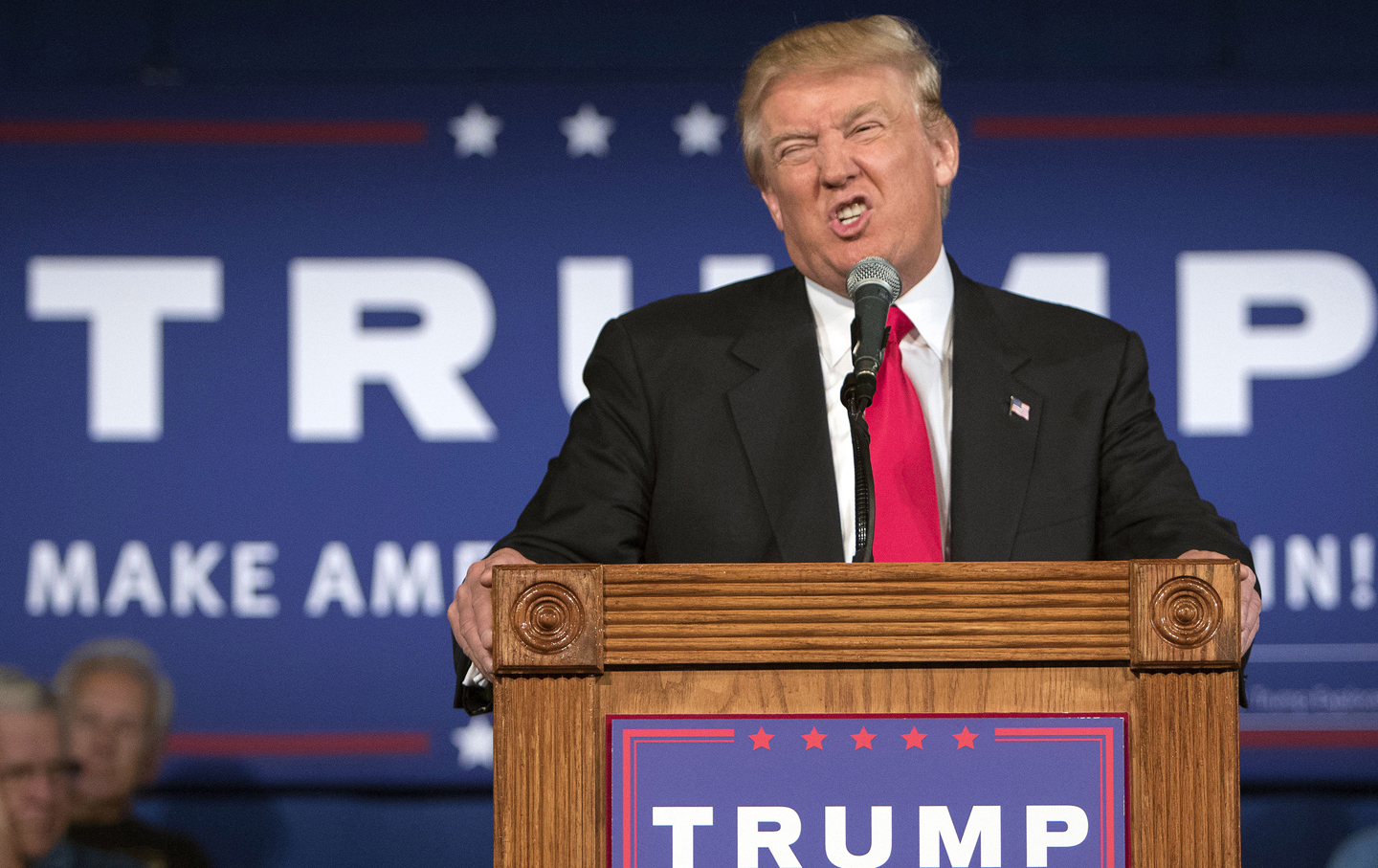
Donald Trump.(AP Photo / Stephen B. Morton)
Within minutes of the Brussels bombings, which left 31 dead and some 300 wounded, Donald Trump took to the airwaves and to Twitter. He didn’t make statements expressing moral and emotional solidarity with the victims and their families. Nor did he talk about the extraordinarily complex political and intelligence challenges facing multicultural Western societies in the face of ISIS’ attacks. Instead, he used his platform to proselytize for torture. The recently captured suspect in November’s Paris attacks, Salah Abdeslam, would have talked “a lot faster with the torture,” said the presidential hopeful, and in doing so might have spilled the beans on his Belgian confrères before they could launch their attacks.
Torture, beyond the waterboarding sanctioned by the Bush administration, has become Trump’s leitmotif. Time and again he urges his crowds on by dangling before them the prospect of violence for violence’s sake. Time and again he flaunts his contempt for international norms by embracing torture—the word, for so long taboo, as much as the deed—as an official policy of state. And yet, he never defines exactly what sorts of state-sponsored torture he is advocating, exactly what actions he seeks to make the courts, the military, and the general public complicit in.
If history is any guide, however, when a powerful state embarks down this road of torture, things get very ugly very quickly. As the Spanish Inquisition gathered steam, more than half a millennium ago, the fanatical Grand Inquisitor Tomás de Torquemada wrapped himself in a mantle of faith and declared that he would torture to save souls and to destroy heretics. The Inquisition began by liberally employing tortura del agua, a technique the American military and intelligence agencies rebirthed after 2001 with the label “waterboarding.” Later, when that was deemed not to have rooted out enough false believers, Torquemada’s team moved onto more drastic methods. They tied victims’ hands behind their backs and hung them from those hands by a rope. Known as the strappado, this technique inflicted excruciating pain and destroyed nerves, ligaments, and tendons in the arms and shoulders. When the strappado didn’t gain the desired results, the torture teams progressed to the infamous rack, stretching the tied victim slowly, dislocating joints, and destroying muscles, ligaments, and bones. Eventually, if the victim didn’t talk, their limbs were literally ripped off of their bodies.
Other examples of torture techniques used by regimes of the time include the Judas chair, which impaled victims through their anuses or their vaginas. Still others had their thumbs crushed, their breasts shredded, their eyes gouged out.
The list of Inquisition torture techniques is long. The legacy is a stench that wafts through the centuries—an endless reminder of the horrors that a handful of fanatics can unleash on a civilization. Five-plus centuries later, Torquemada’s name remains, rightly, infamous, a buzzword for cruelty and extremism.
Donald Trump plays the tough-guy well; he’s like the Mafia-type cinema figure who intimidates and thrills his audiences by talking about his enemies’ “sleeping with the fishes.” But he never actually gets down and dirty and explains to those audiences exactly what he’ll be asking them to do, when, as president and as commander in chief, he authorizes “the torture,” and a “lot worse than waterboarding.”
Will he make them dismember ISIS recruits limb from limb? Will he order them to impale them, slowly, on spikes? Will he, as did the Nazi Gestapo with their victims, have them hang terrorism suspects from meat hooks? Will he, as did partisans during the brutal Russian Civil War that followed the 1917 revolution, strip the skin from the hands of victims? Will he order psychiatrists to use their skills to break the minds of dissidents and terrorists, as did Soviet medics under Stalin? Will he order soldiers to throw young men and women out of helicopters and planes, some to plunge into the ocean, others into volcanoes, as did the juntas of Latin America in the 1970s and 1980s? Will he, as did Saddam Hussein, order soldiers and intelligence officials to pour acid onto victims, or drill holes in their feet and hands? Will he insist that teenage recruits rip out toenails and fingernails, smash faces beyond repair, stomp on testicles, rape bound men and women?
Or will he, as did a rogue police unit in Southside Chicago that I wrote about nearly 20 years ago, go after suspects and force confessions out of them by tying them to scalding hot radiators; by mock-executing them; or by using the Vietnam War–era “telephone” torture—in which electrodes were clipped to a victim’s genitals and a wind-up device, like a field telephone, was then cranked to deliver devastating electric shocks?
These are not the sorts of questions that one normally asks of a leading presidential hopeful. But then, again, no serious candidate for the American presidency—or for the leadership of any other functioning democracy—has ever fetishized torture in the way that Donald Trump has.
So, Donald Torquemada, it’s time to come clean. Don’t just play the tough guy by fetishizing torture in the abstract. What is it, exactly, that you want to make a project of the American state? What lengths are you willing to go to? Down what twisted, sadistic, paths do you want to lead the American people?
Come clean, Inquisitor. I suspect, when you do, you’ll find the American people aren’t nearly as perverted as you take them to be.
Sasha AbramskyTwitterSasha Abramsky is The Nation's Western correspondent. He is the author of several books, including The American Way of Poverty, The House of Twenty Thousand Books, Little Wonder: The Fabulous Story of Lottie Dod, the World's First Female Sports Superstar, and most recently Chaos Comes Calling: The Battle Against the Far-Right Takeover of Small-Town America.